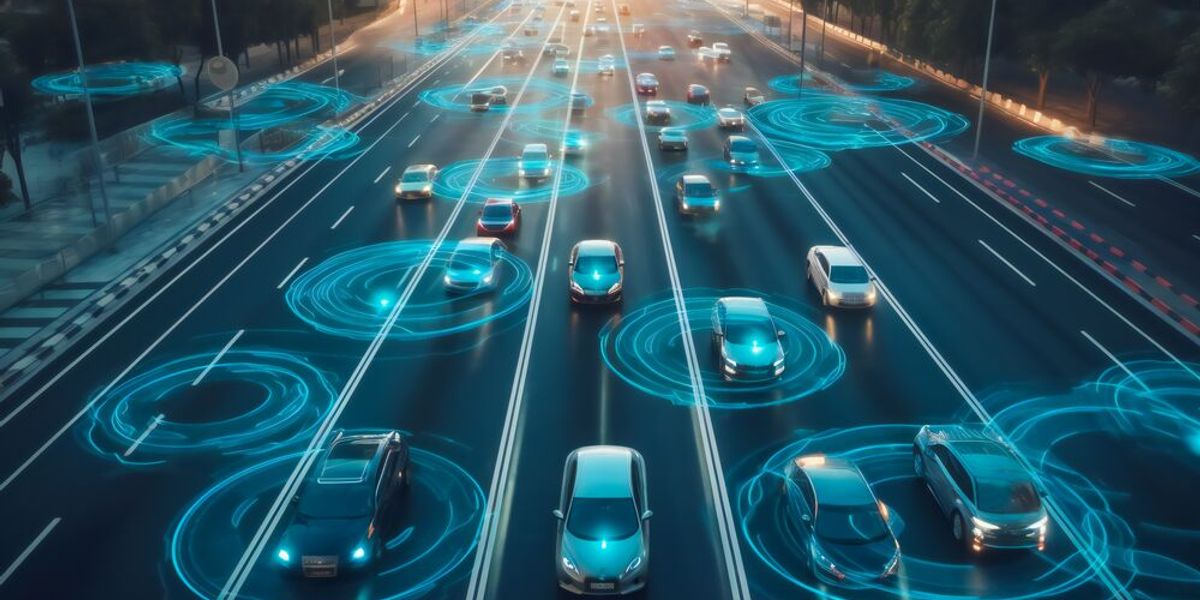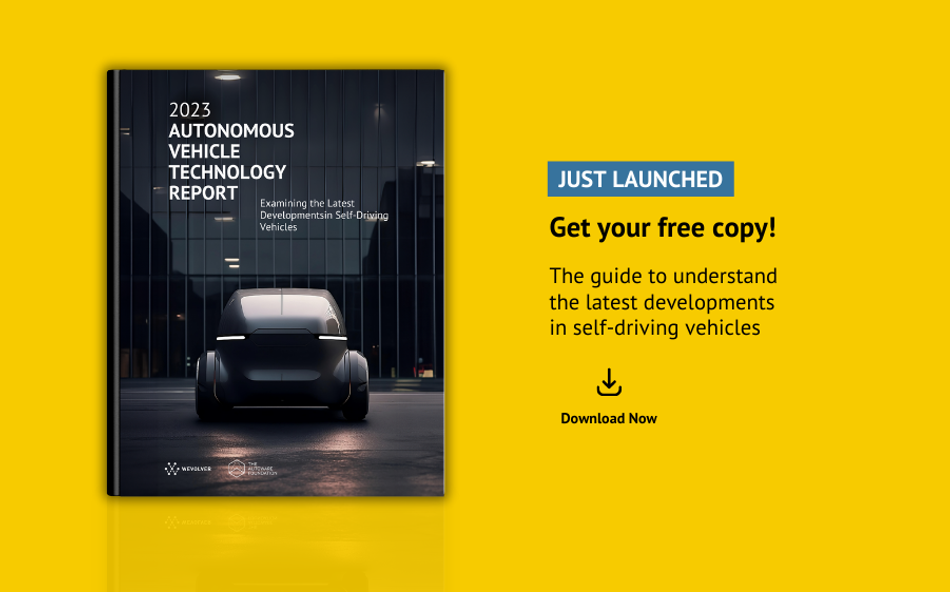2023 Autonomous Vehicle Report Interview: Accelerating AV Development Through Customer Collaboration

Image credit: Adobe Stock
Sponsor interview with Mark Patrick, the Director of Technical Content, EMEA at Mouser Electronics.
In this interview, Mark Patrick, Director of Technical Content, EMEA at Mouser Electronics, discusses the importance and challenges of electronics for AV applications and how Mouser collaborates with customers to accelerate AV adoption. Download the full report to read all our sponsor interviews.
Mark, could you please describe your role at Mouser and the company's activities?
Mark Patrick: I oversee technical content for Mouser in EMEA. This role encompasses not just written content but also involves projects and event booth development aimed at engaging our primarily technical audience with relevant content and activities.
Our goal is to both inspire and inform our audience, providing ideas and guidance on various projects, offering detailed instructions, code, hardware, and related materials. Ultimately, we are a technical distributor, supplying highly technical products to design engineers and component buyers. The technical marketing aspect is inherent in what we do, as authenticity is crucial when addressing our audience. This requires the collaboration of engineering and content teams. My background lies in semiconductors, technical sales, and application support. My engineering team consists of master-level electrical engineering students from the Technical University of Munich. They are a young, dynamic team capable of diverse tasks.
Thank you for the introduction. Can you elaborate on Mouser's activities?
Mark Patrick: Certainly. In simple terms, Mouser is a global distributor with full authorization from all our manufacturers. We stock products from around 1,200 manufacturers, including well-known brands and specialized niche players. Our commerce platform allows anyone to purchase products needed for their development, design, or production processes.
You serve a wide range of customers, from OEMs to startups, correct?
Mark Patrick: Our customer base is diverse, ranging from individuals, including DIY enthusiasts often referred to as 'Fred in the shed,' to small consultancies, and up to large corporations and OEMs. This includes well-known companies like Google and Apple, who seek the convenience of our services.
Could you tell us about Mouser's unique selling proposition (USP)?
Mark Patrick: There are other organizations similar to Mouser, but our USP lies in our focus on new product introduction. We lead our marketing efforts with the latest products and designs. We maintain over a million individual part numbers in stock at one location, ensuring a high-quality customer experience. This means that what you see on our website is readily available. We offer authentic and traceable components, a critical factor in light of recent supply chain concerns. Our vast inventory and commitment to offering new and innovative products set us apart.
How do you stay updated on the latest products and technologies?
Mark Patrick: We collaborate closely with our suppliers, maintaining a relationship that provides insights into their upcoming products and release schedules. We are prepared to create content, including technical details, for these products, ensuring we can go live as soon as the product hits the market. Additionally, we create content that becomes highly visible on search engines, helping customers find these new products quickly. This way, we facilitate access to technology and introduce it to new customers.
What are the benefits of Mouser's services for your customers?
Mark Patrick: Our customers, often engineers working on designs, require rapid access to products, particularly during testing, proof of concept, and prototyping phases. They need assurance that the products are readily available. We offer this level of trust through our website, in-stock inventory, and our ability to deliver products within two to three days worldwide from a single location in the US. This high-quality service hinges on the convenience and ease of finding products, combined with our informative and inspirational content.
With the increasing complexity of vehicles, particularly in the context of autonomous cars, how important is Mouser's service in providing the necessary technology and components?
Mark Patrick: Autonomous vehicles rely on various technologies, many of which require semiconductors for their functionality. The increasing capabilities and functionalities in modern vehicles are directly enabled by semiconductors. These components are now essential for even basic features like reversing cameras, navigation systems, audio systems, and safety features. Semiconductors play a critical role in processing the data generated by sensors and providing a seamless user experience. As the automotive industry continues to innovate, the role of semiconductors will only grow.
If an OEM needs a specific part that doesn't exist, can Mouser assist in facilitating the creation of such parts?
Mark Patrick: While we primarily stock standard products, we do collaborate with customers and tech support to address inquiries about specific components. However, for OEMs developing entirely new components, it is more common to work directly with manufacturers to create bespoke components, particularly given the scale of production in the automotive industry.
Regarding autonomous vehicles, do you think many of the underlying technologies and components are shared across different manufacturers?
Mark Patrick: Yes, there are common components and technologies that serve specific functions in autonomous vehicles, such as connectors, semiconductors, and sensors. Many of these components are not exclusive to a single manufacturer. However, there can be custom parts created for specific OEMs. In general, a wide range of standard components can be used to build various aspects of autonomous vehicle systems, with the focus shifting more toward software and user experience differentiation.
When do you anticipate mass rollout of fully autonomous vehicles, and what are the main challenges to overcome?
Mark Patrick: The rollout of fully autonomous vehicles is already happening to some extent, particularly at level two, where we see vehicles with various assistance features. To achieve higher levels of autonomy, there are technical, ethical, and social challenges to address. Technically, the necessary processing power and machine learning algorithms are increasingly available. Social acceptance of driverless cars and ethical considerations, such as decision-making in complex situations, remain areas of concern. While trials of fully autonomous vehicles are ongoing, predicting when they will become mainstream is challenging. However, we may see more of these services in cities across the world in the next five years.
Before fully autonomous vehicles become commonplace on the road, do you expect them to be used in controlled environments, like ports, airports, or factories?
Mark Patrick: Yes, we are already witnessing the use of autonomous technology in controlled environments, such as autonomous ground vehicles and robots. In these settings, the technology is more readily accepted and deployed. The same principles can be applied to larger-scale deployments in defined geographical areas with established infrastructure. Controlled environments with specific infrastructure and limited interaction with the general public are more suitable for early adoption. Industrial facilities and warehouses are already leveraging autonomous technology for efficiency.
Is there anything else about Mouser or your role that you would like to mention for the report?
Mark Patrick: Our primary role at Mouser is to enable access to technology. We work closely with our suppliers to ensure that those working on advanced systems have access to the technology they need, whether it is high-end processing power, sensing technologies, or a wide range of components. We offer a comprehensive range of products that can be used to build end-to-end systems. Essentially, we aim to provide everything customers need to develop their projects, from individual components to complete kits, making the process of accessing technology as straightforward as possible.
Read more about Mouser on Wevolver.

